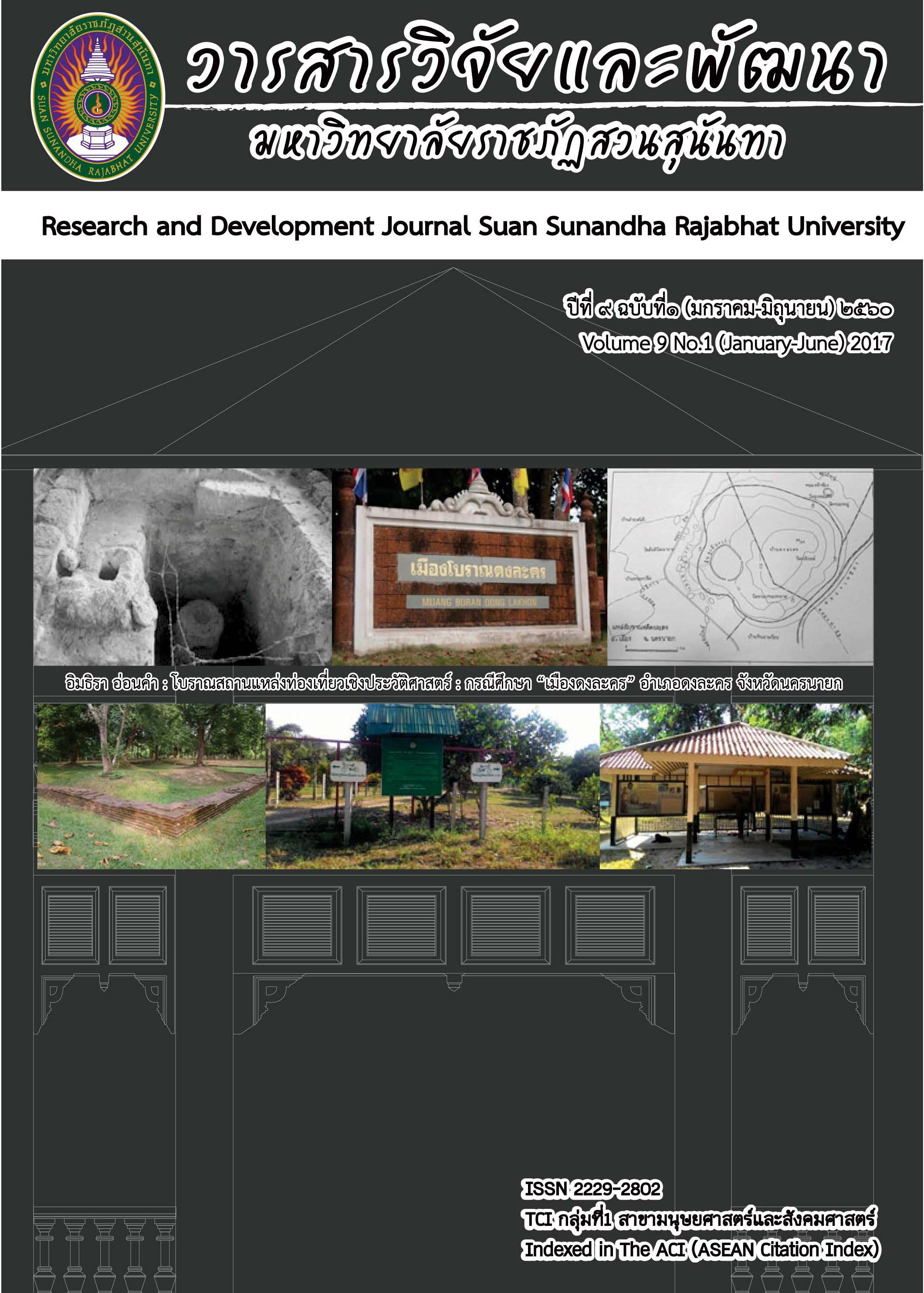-
DOI:
https://doi.org/10.53848/irdssru.v9i1.213785คำสำคัญ:
-บทคัดย่อ
-
เอกสารอ้างอิง
Amabile, T. M. (1997). Motivating
creativity in organizations: on doing
what you love and loving what you
do. California Management
Review. 40(1), 39-58.
Amo, W. B. (2005). Employee innovation
behavior. Thesis of Doctor
Oeconomia, Graduate School of
Business, Regional University,
Norway.
Anderson, N. R. & West, M. A. (1998).
Measuring climate for work
groupinnovation: development and
validation of the team climate
inventory. Journal of Organizational
Behavior. 19, 235-258.
Biech, E. (1996). Creativity & innovation:
The ASTD trainer’s sourcebook.
New York: McGraw-Hill.
Binnewies, C. & Gromer, M. (2012).
Creativity and innovation at work:
The role of work characteristics
and personal initiative.
Psicothema, 24, 101-105.
Bryan, J., & Henry, L. (2012). A model for
building school family community
partnerships: Principles and
process. Journal of Counseling &
Development, 90(4), 408-420.
Chang, J. C. & Yang, Y.L. (2012). The effect
of organization's innovational
climate on student’s creative selfefficacy and innovative behavior.
The Journal of Business and
Entrepreneurship, 1(1), 75-100.
Cropley, A. J.: (1997). Fostering creativity
in the classroom: general
principles. Creativity Research
Handbook, 1, 83–114.
Epstein.J.L. (1995). School/ family/
community partnerships: Caring for
the children we care. Phi Delta
Kappan, 76,701-702.
Goodyear, P. (2002). Psychological
foundation for networked
learning. In Steeples, C. & Jones, C.
(eds.) Networked Learning:
Perspectives and Issues, 49-75
Isaksen, S.G. and Lauer, K.J. (2001).
Perceptions of the best and worst
climates for creativity: preliminary
validation evidence for the
situational outlook questionaire.
Creative Research Journal. 13 (2),
171-184.
Janssen, Onne. (2000). Job demand,
perceptions of effort-reward fairness
andinnovative work behaviour.
Journal of Occupational and
Organizational Psychology. 73,
287 – 302.
Kleysen, R. F., & Street, C. T. (2001).
Toward a multi-dimensional
measure of individual Innovative
behavior. Journal of Intellectual
Capital. 2 (3), 284-296.
Moudarres, D., & Ezer, H. (1995).
Collaboration with individuals,
families, and groups in the
community. Paper presented at
International Conference on
Community Health Centres,
Montreal.
Nemerzitski, S and et.al (2013).
Constructing model of teachers’
innovative behaviour in school
environment. The Journal of
teachers and teaching: theory
and practice, Retrieved June 1,
2013, from http://dx.doi.org/
10.1080/13540602.2013.770230.
Perry-Smith, J. E., & Shalley, C. E. (2003).
The social side of creativity: A
static and dynamic social
network perspective. Academy of
Management Review, 28, 89-106.
Sanders, M. G. (1998). The effects of
school, family, and community
support on the academic
achievement of African American
adolescents. Urban Education,
33(3), 385-409.
Scott, Susanne G.; & Bruce, Reginald A.
(1994). Determinants of innovative
behavior: a path model of
individual innovation in the
workplace. Academy of Management
Journal. (3), 580-607.
creativity in organizations: on doing
what you love and loving what you
do. California Management
Review. 40(1), 39-58.
Amo, W. B. (2005). Employee innovation
behavior. Thesis of Doctor
Oeconomia, Graduate School of
Business, Regional University,
Norway.
Anderson, N. R. & West, M. A. (1998).
Measuring climate for work
groupinnovation: development and
validation of the team climate
inventory. Journal of Organizational
Behavior. 19, 235-258.
Biech, E. (1996). Creativity & innovation:
The ASTD trainer’s sourcebook.
New York: McGraw-Hill.
Binnewies, C. & Gromer, M. (2012).
Creativity and innovation at work:
The role of work characteristics
and personal initiative.
Psicothema, 24, 101-105.
Bryan, J., & Henry, L. (2012). A model for
building school family community
partnerships: Principles and
process. Journal of Counseling &
Development, 90(4), 408-420.
Chang, J. C. & Yang, Y.L. (2012). The effect
of organization's innovational
climate on student’s creative selfefficacy and innovative behavior.
The Journal of Business and
Entrepreneurship, 1(1), 75-100.
Cropley, A. J.: (1997). Fostering creativity
in the classroom: general
principles. Creativity Research
Handbook, 1, 83–114.
Epstein.J.L. (1995). School/ family/
community partnerships: Caring for
the children we care. Phi Delta
Kappan, 76,701-702.
Goodyear, P. (2002). Psychological
foundation for networked
learning. In Steeples, C. & Jones, C.
(eds.) Networked Learning:
Perspectives and Issues, 49-75
Isaksen, S.G. and Lauer, K.J. (2001).
Perceptions of the best and worst
climates for creativity: preliminary
validation evidence for the
situational outlook questionaire.
Creative Research Journal. 13 (2),
171-184.
Janssen, Onne. (2000). Job demand,
perceptions of effort-reward fairness
andinnovative work behaviour.
Journal of Occupational and
Organizational Psychology. 73,
287 – 302.
Kleysen, R. F., & Street, C. T. (2001).
Toward a multi-dimensional
measure of individual Innovative
behavior. Journal of Intellectual
Capital. 2 (3), 284-296.
Moudarres, D., & Ezer, H. (1995).
Collaboration with individuals,
families, and groups in the
community. Paper presented at
International Conference on
Community Health Centres,
Montreal.
Nemerzitski, S and et.al (2013).
Constructing model of teachers’
innovative behaviour in school
environment. The Journal of
teachers and teaching: theory
and practice, Retrieved June 1,
2013, from http://dx.doi.org/
10.1080/13540602.2013.770230.
Perry-Smith, J. E., & Shalley, C. E. (2003).
The social side of creativity: A
static and dynamic social
network perspective. Academy of
Management Review, 28, 89-106.
Sanders, M. G. (1998). The effects of
school, family, and community
support on the academic
achievement of African American
adolescents. Urban Education,
33(3), 385-409.
Scott, Susanne G.; & Bruce, Reginald A.
(1994). Determinants of innovative
behavior: a path model of
individual innovation in the
workplace. Academy of Management
Journal. (3), 580-607.
ดาวน์โหลด
เผยแพร่แล้ว
02-09-2019
รูปแบบการอ้างอิง
Koetwichai, P., Na-Songkhla, J., & Thangkabutra, T. (2019). -. Research and Development Journal Suan Sunandha Rajabhat University, 9(1), 74. https://doi.org/10.53848/irdssru.v9i1.213785
ฉบับ
ประเภทบทความ
บทความวิจัย
สัญญาอนุญาต
บทความที่ได้รับการตีพิมพ์เป็นลิขสิทธิ์ของ สถาบันวิจัยและพัฒนา มหาวิทยาลัยราชภัฎสวนสุนันทา
ข้อความที่ปรากฏในบทความแต่ละเรื่องในวารสารวิชาการเล่มนี้เป็นความคิดเห็นส่วนตัวของผู้เขียนแต่ละท่านไม่เกี่ยวข้องกับมหาวิทยาลัยราชภัฎสวนสุนันทา และคณาจารย์ท่านอื่นๆในมหาวิทยาลัยฯ แต่อย่างใด ความรับผิดชอบองค์ประกอบทั้งหมดของบทความแต่ละเรื่องเป็นของผู้เขียนแต่ละท่าน หากมีความผิดพลาดใดๆ ผู้เขียนแต่ละท่านจะรับผิดชอบบทความของตนเองแต่ผู้เดียว





